Abstract
1. Muscles were placed in a solution which depolarized the membrane to -30 to -20 mV so that mechanical activation was made refractory. Mechanical repriming and the recovery of voltage dependent charge movement were studied using a voltage clamp technique. 2. Mechanical repriming was investigated by determining the duration of a hyperpolarizing pulse required to elicit a just-visible contraction for various post-pulse potentials. As the post-pulse potential was made more positive shorter repriming times were required to produce a threshold contraction. The relationship approached a minimum repriming time for very positive post-pulse potentials. 3. These results suggest that hyperpolarization gradually removes some component of the activation mechanism from a refractory state and that the effectiveness of the amount which has recovered depends on the post-pulse potential. A quantitative explanation is given using a simple model in which the essential component is assumed to be the charge movement process. 4. The rate of repriming contraction is voltage dependent; at -160 mV the rate is about twice that at -120 mV. Between 4 and 10 degrees C the rate has a Q10 of about 9. 5. Recovery of charge movement was studied using a repriming duration less than that required to produce a threshold contraction. The observed charge movement increased linearly with repriming time, consistent with the approximately linear initial segment of a slow exponential recovery process. Extrapolation of the recovery curve indicated that 2-5 n/CmuF of charge is reprimed in the time necessary to reprime a threshold contraction. 6. The charge which recovers during a subthreshold repriming pulse is distributed according to membrane potential in the same way as a fully reprimed charge. 7. These results are consistent with the hypothesis that voltage dependent charge movement is an intermediate step in excitation-contraction coupling. 8. The characteristics of a second type of charge movement are also described.
Full text
PDF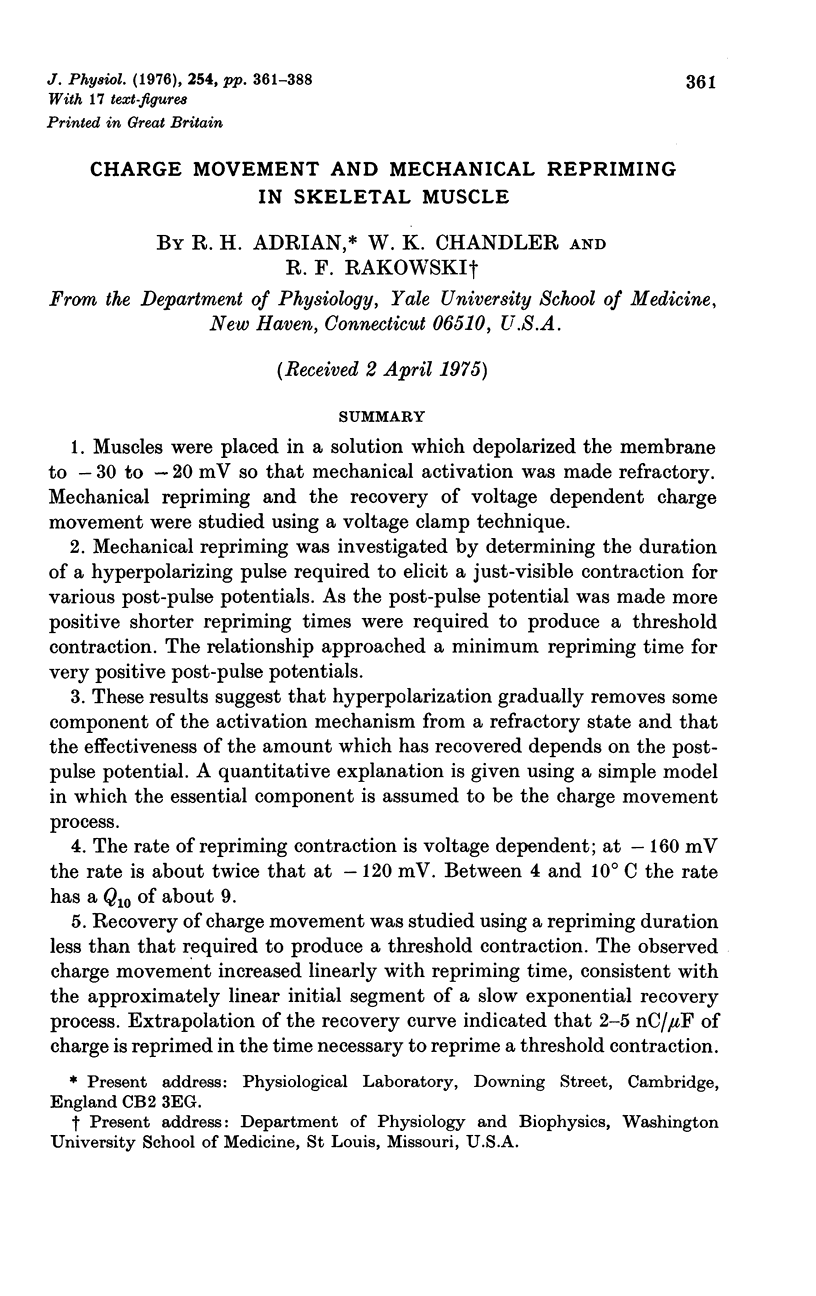
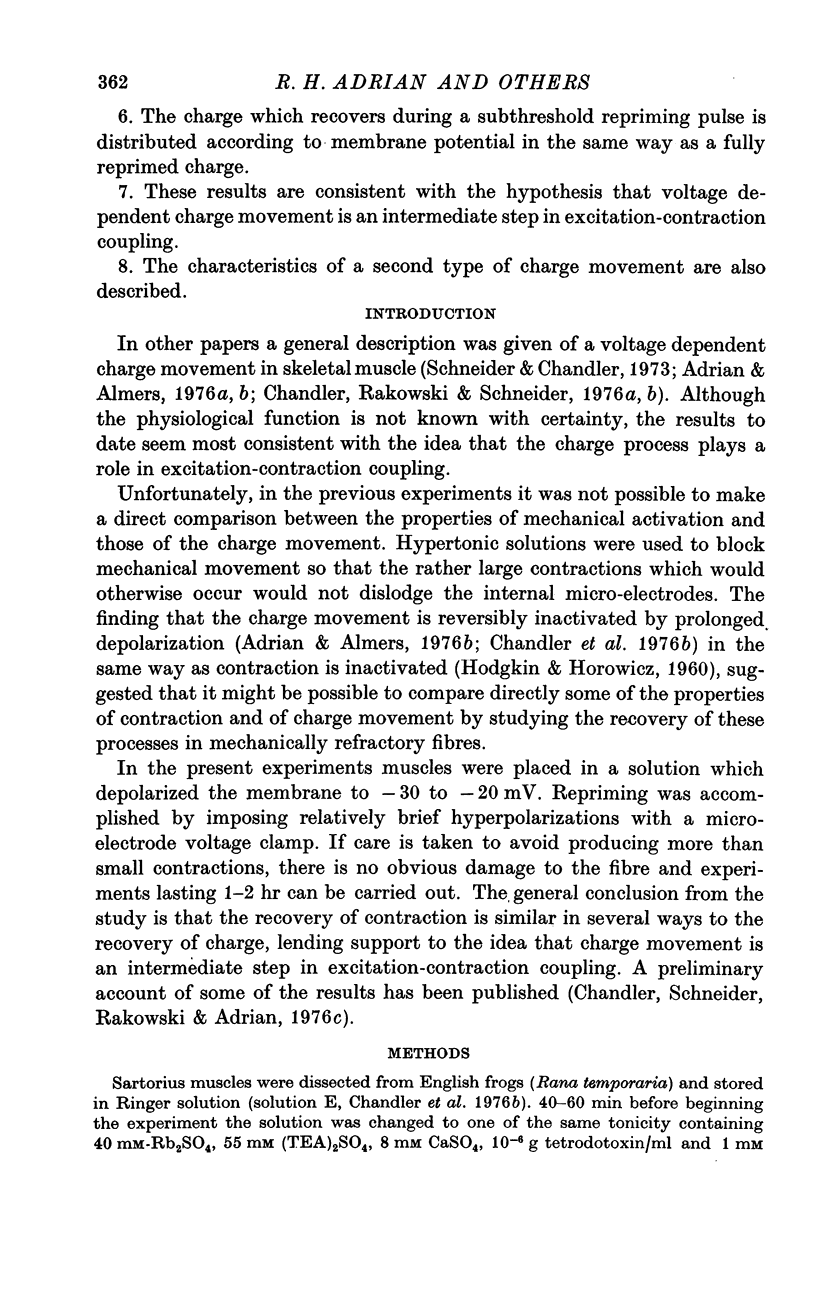
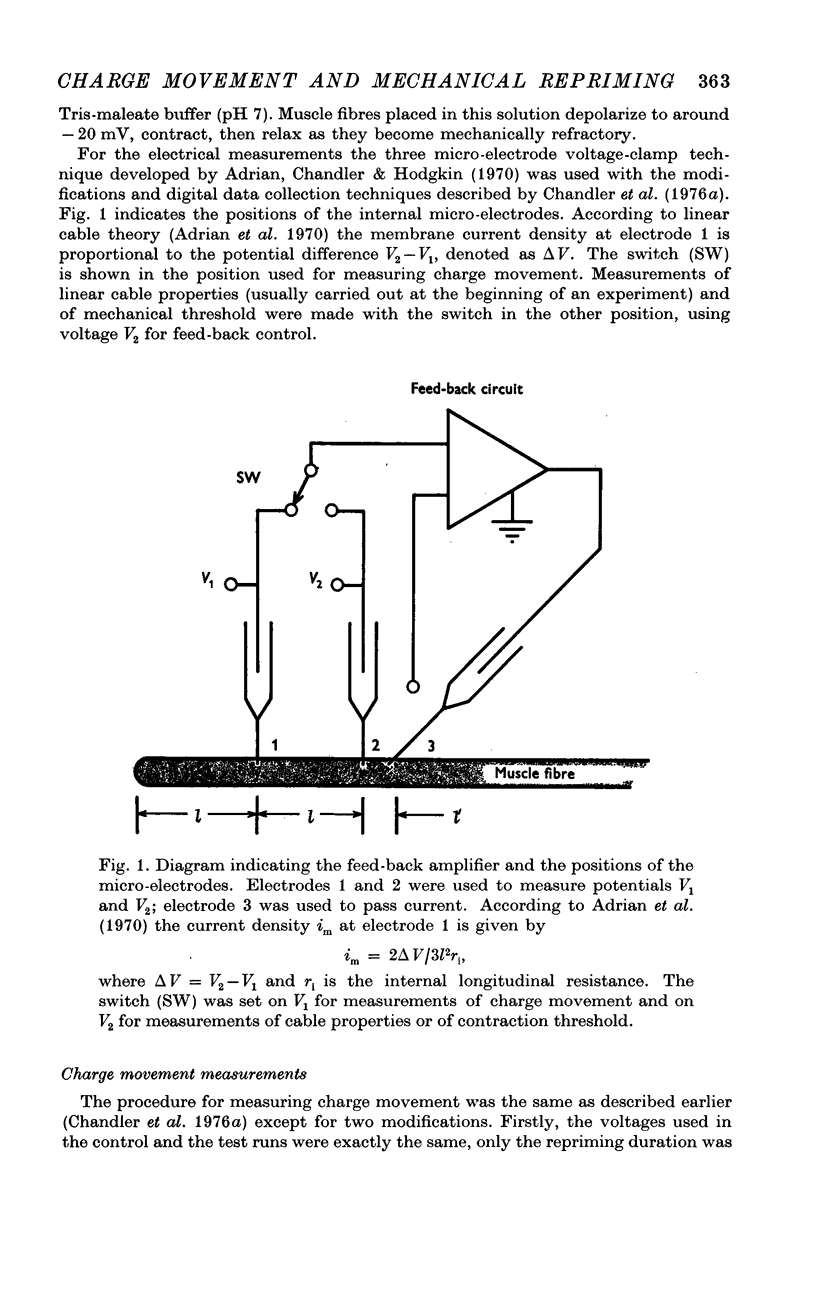
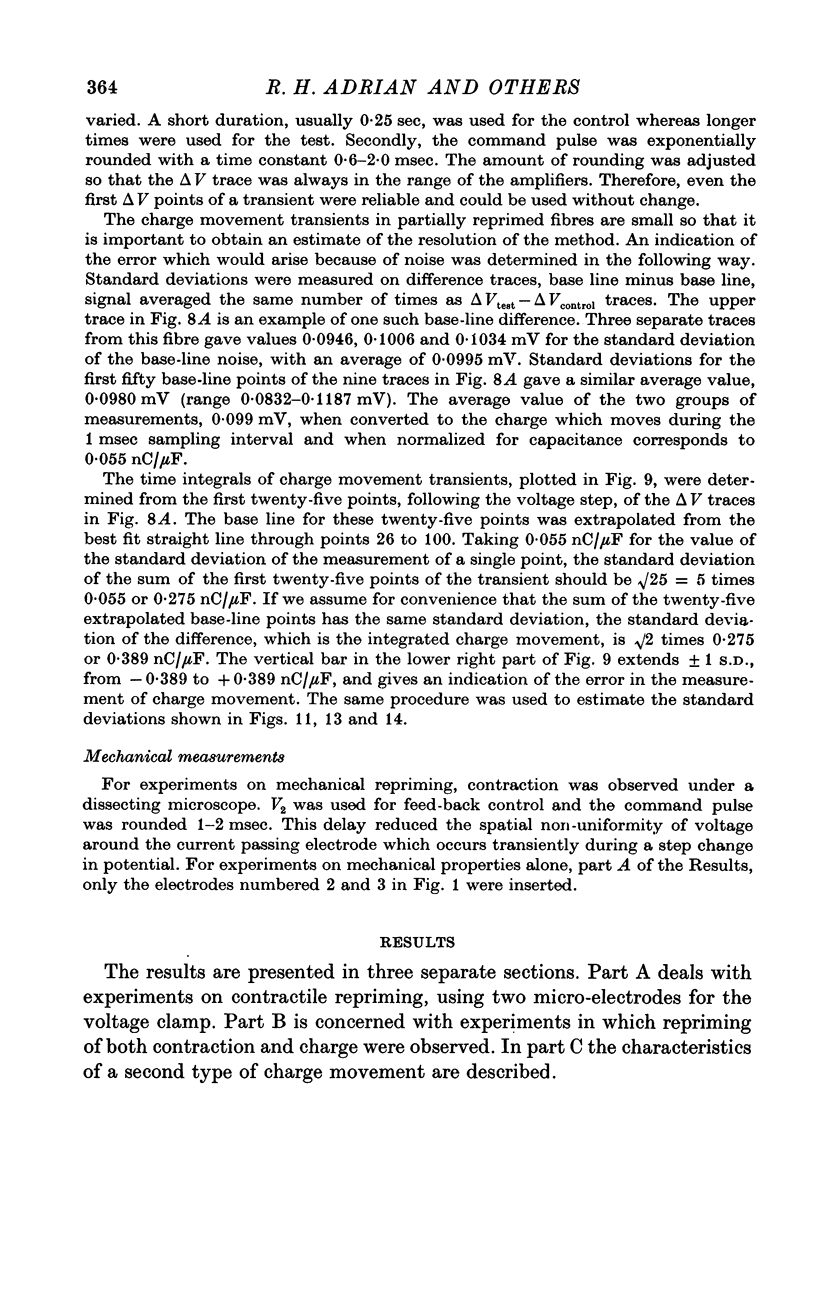
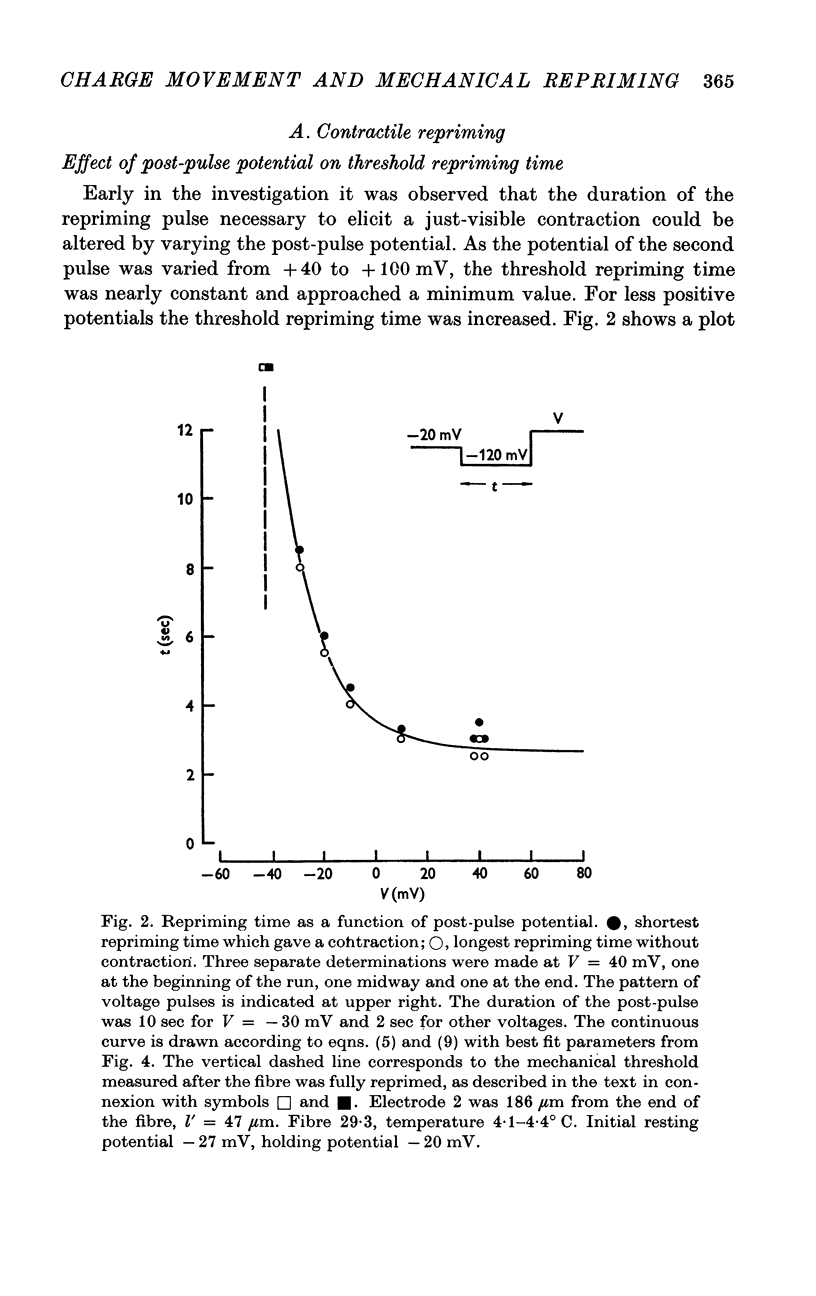
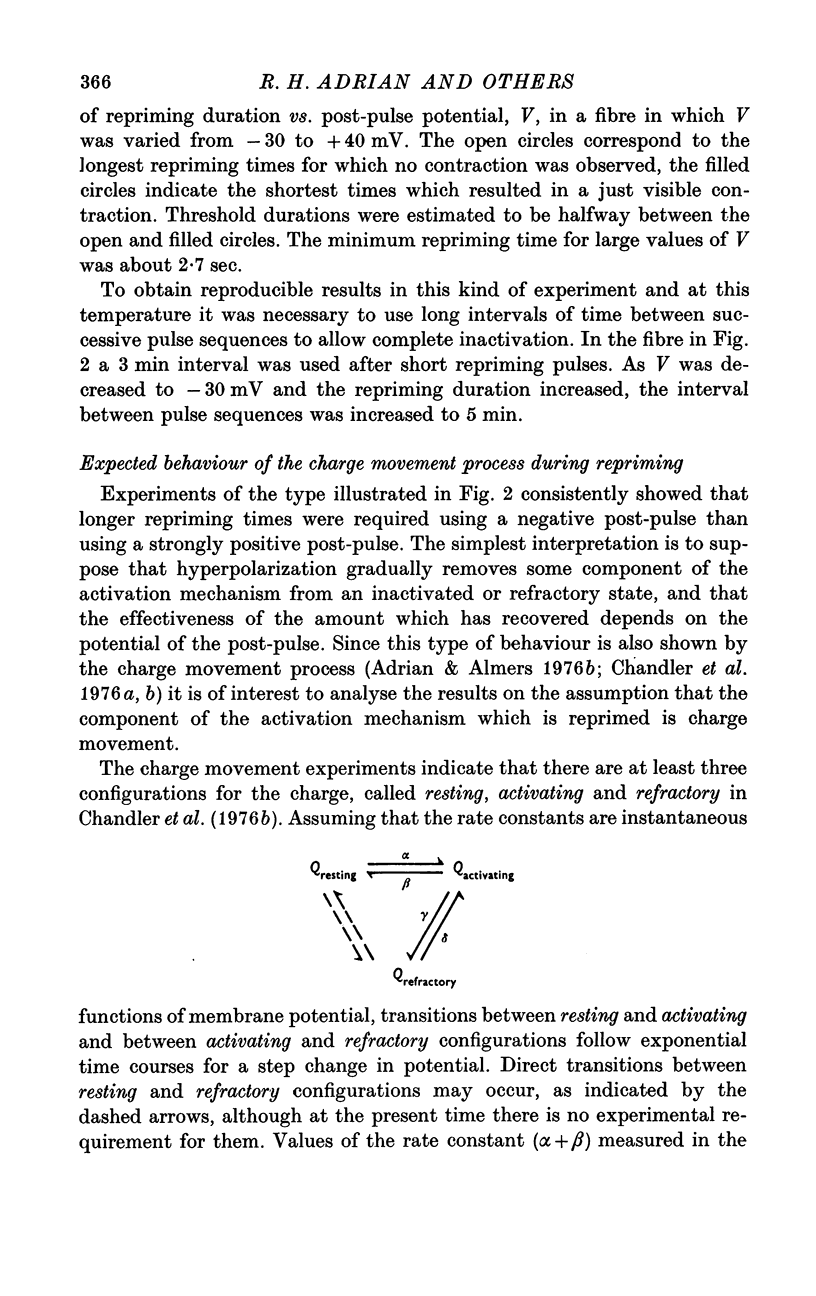
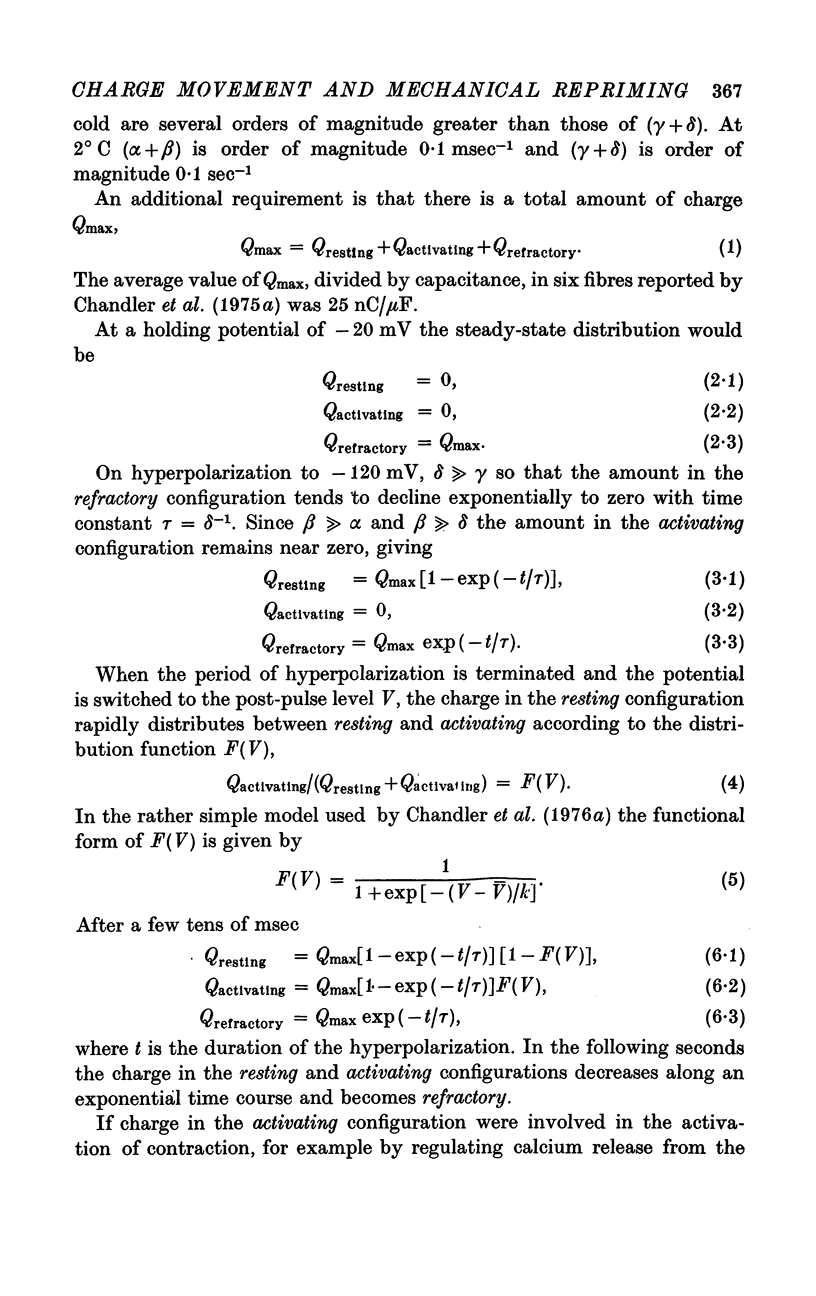
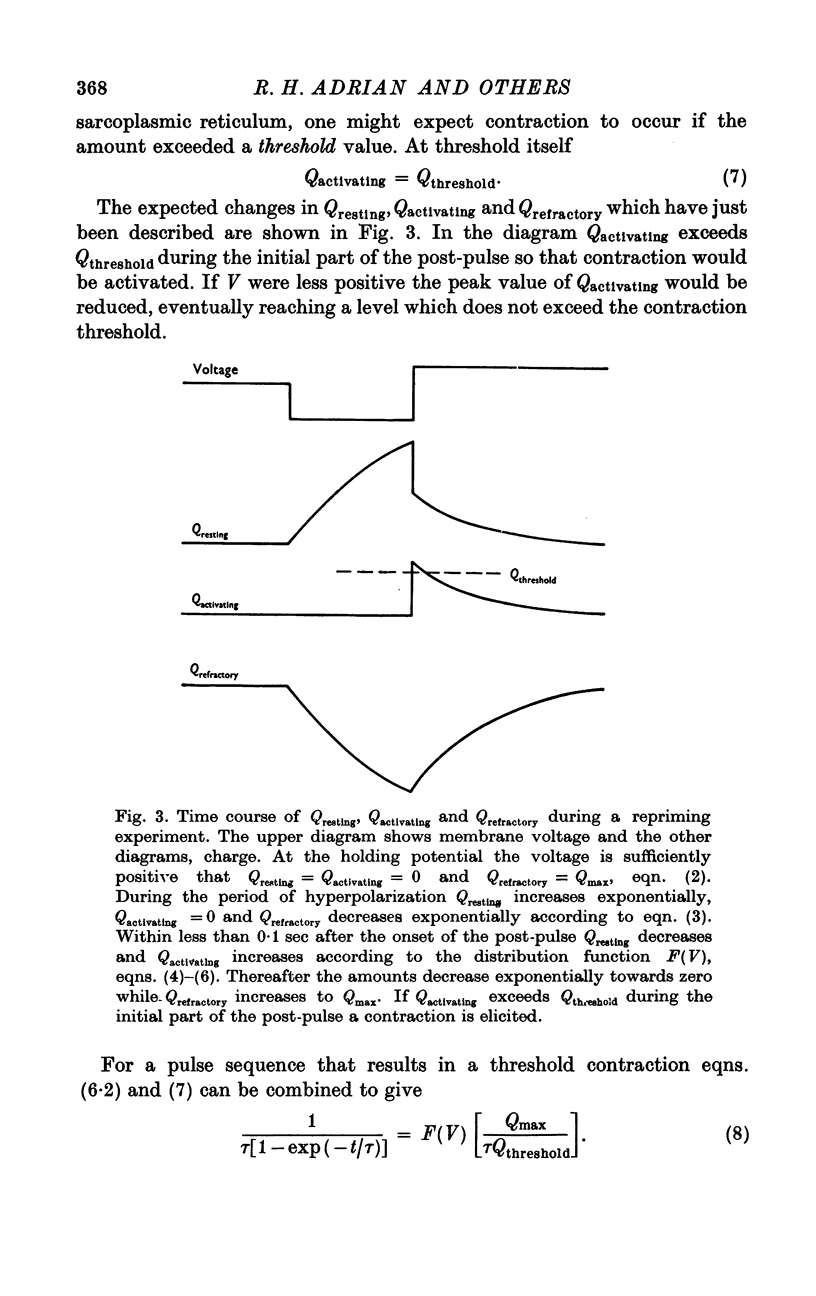
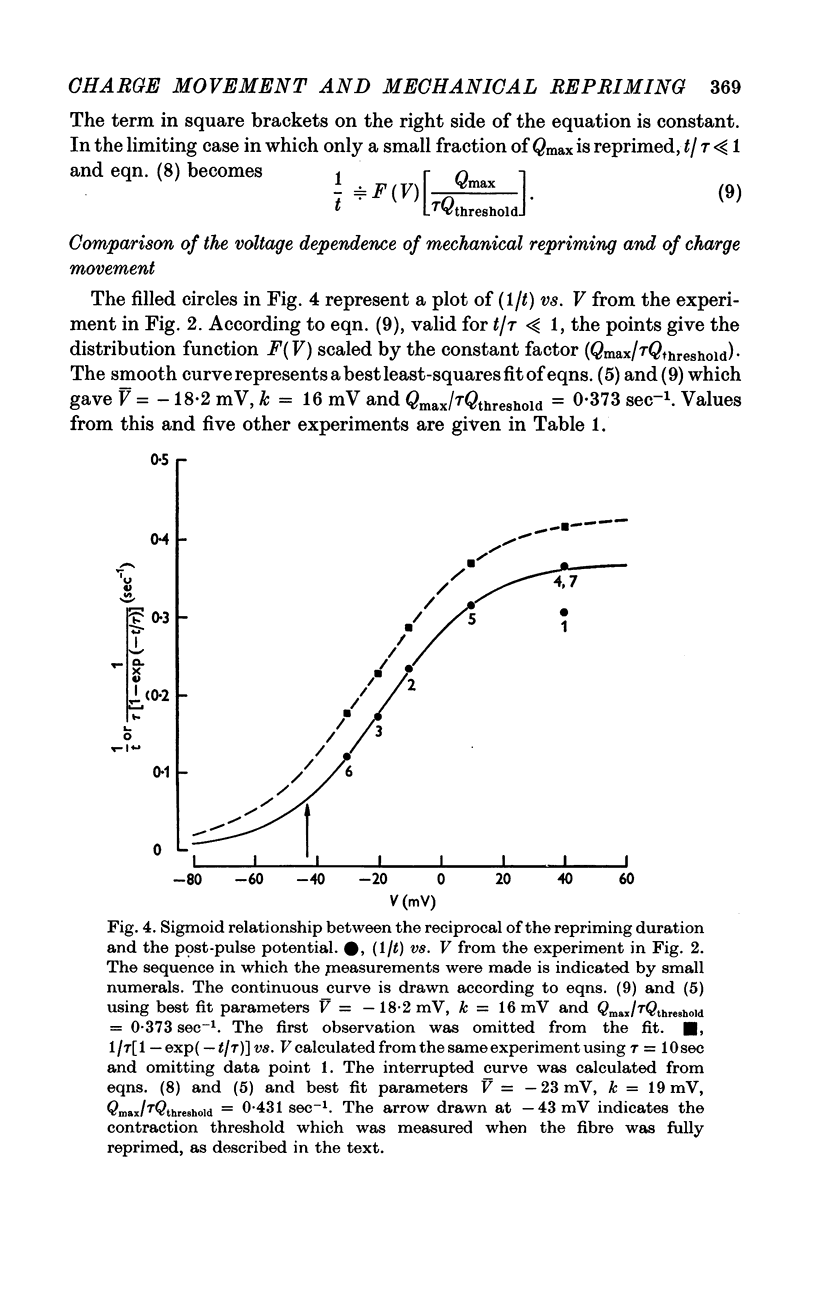
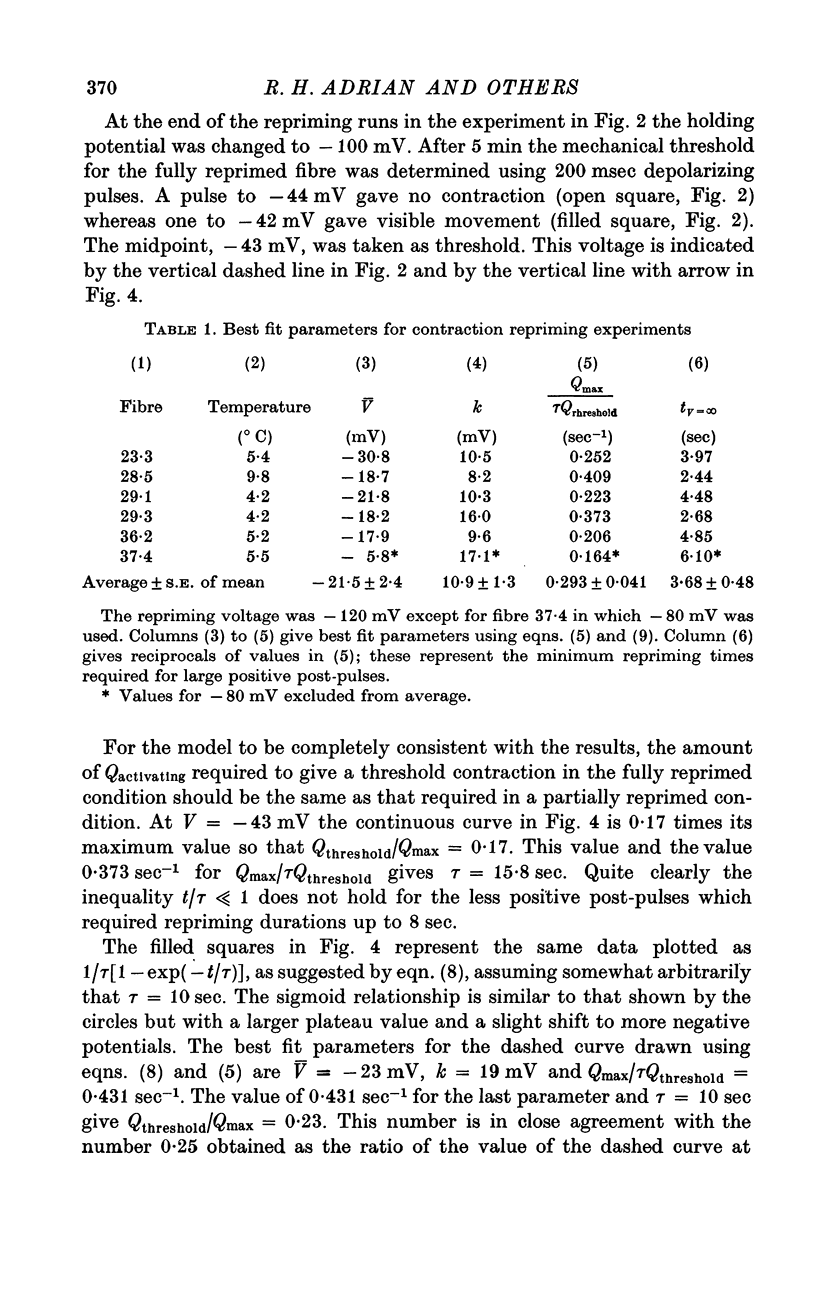
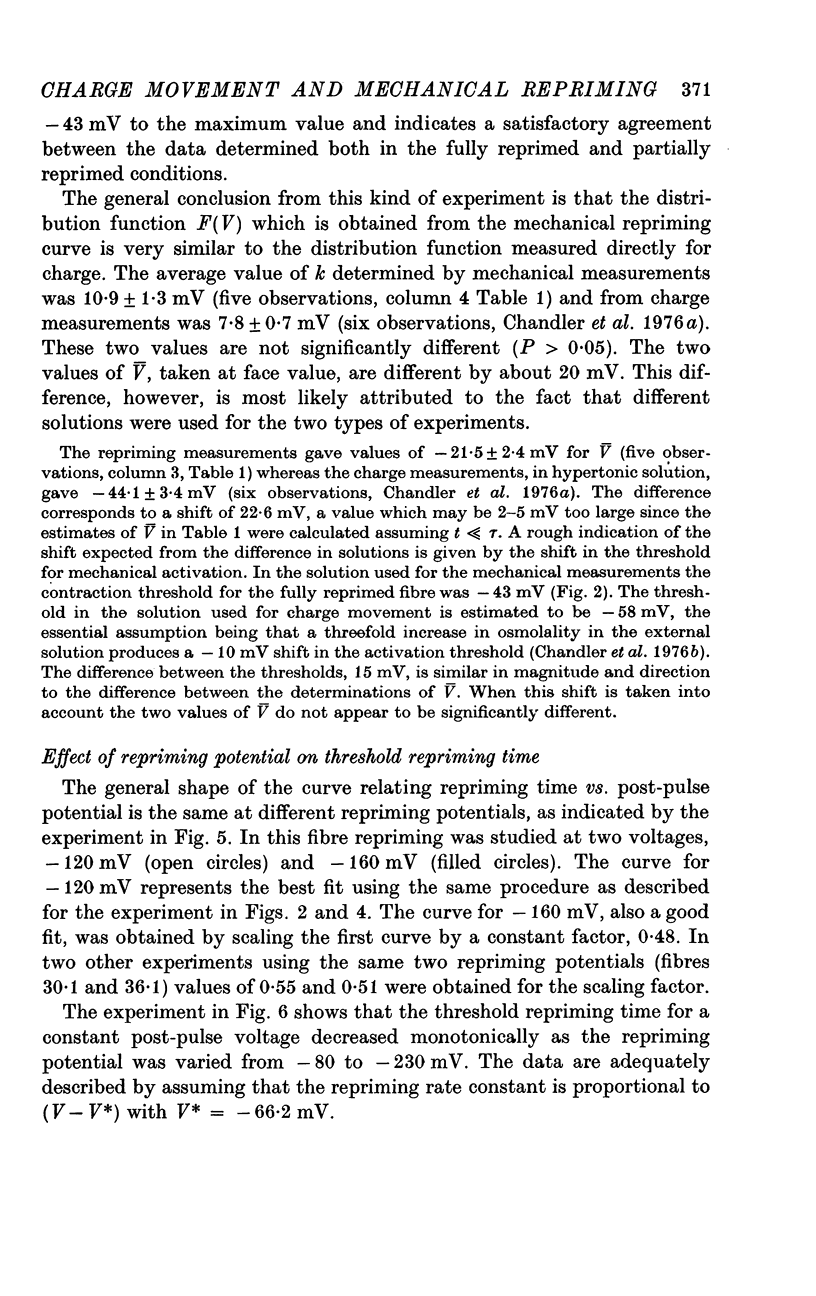
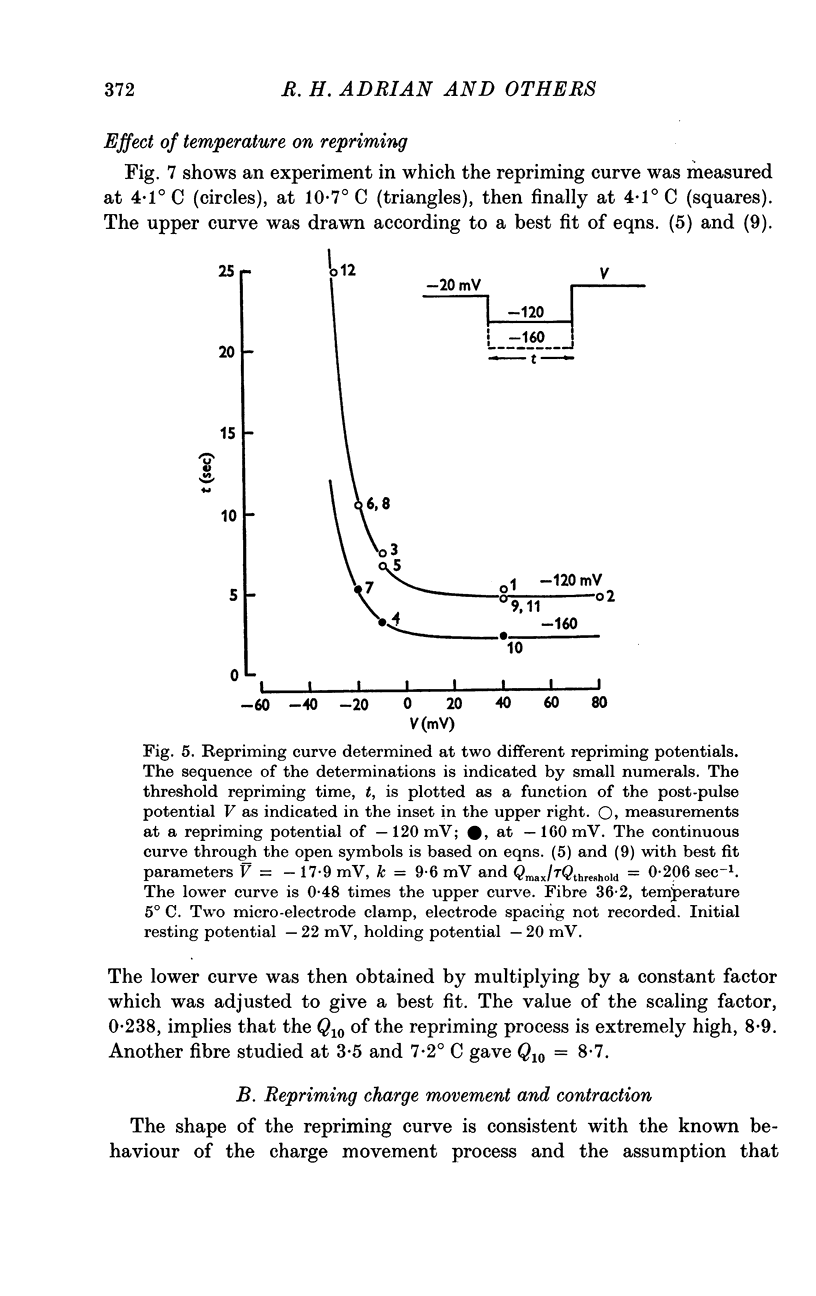
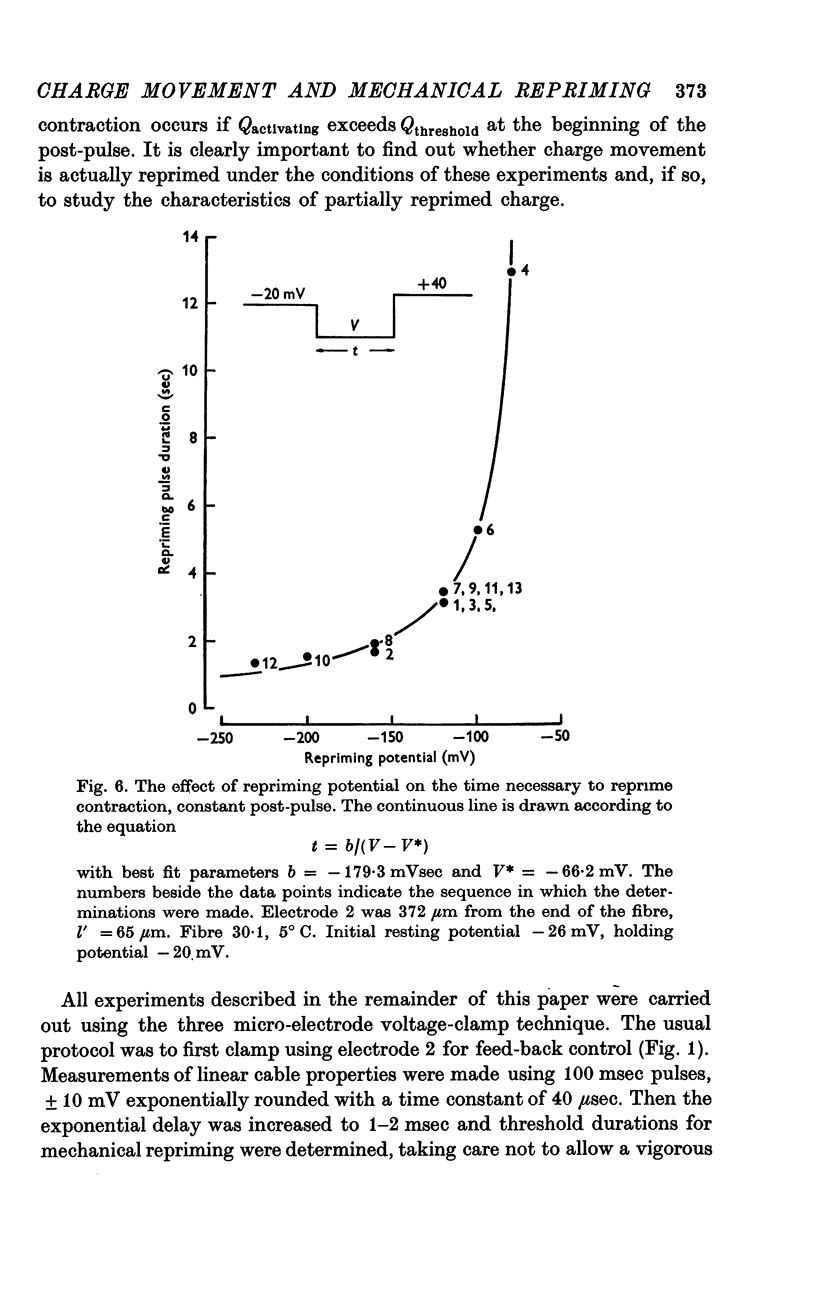
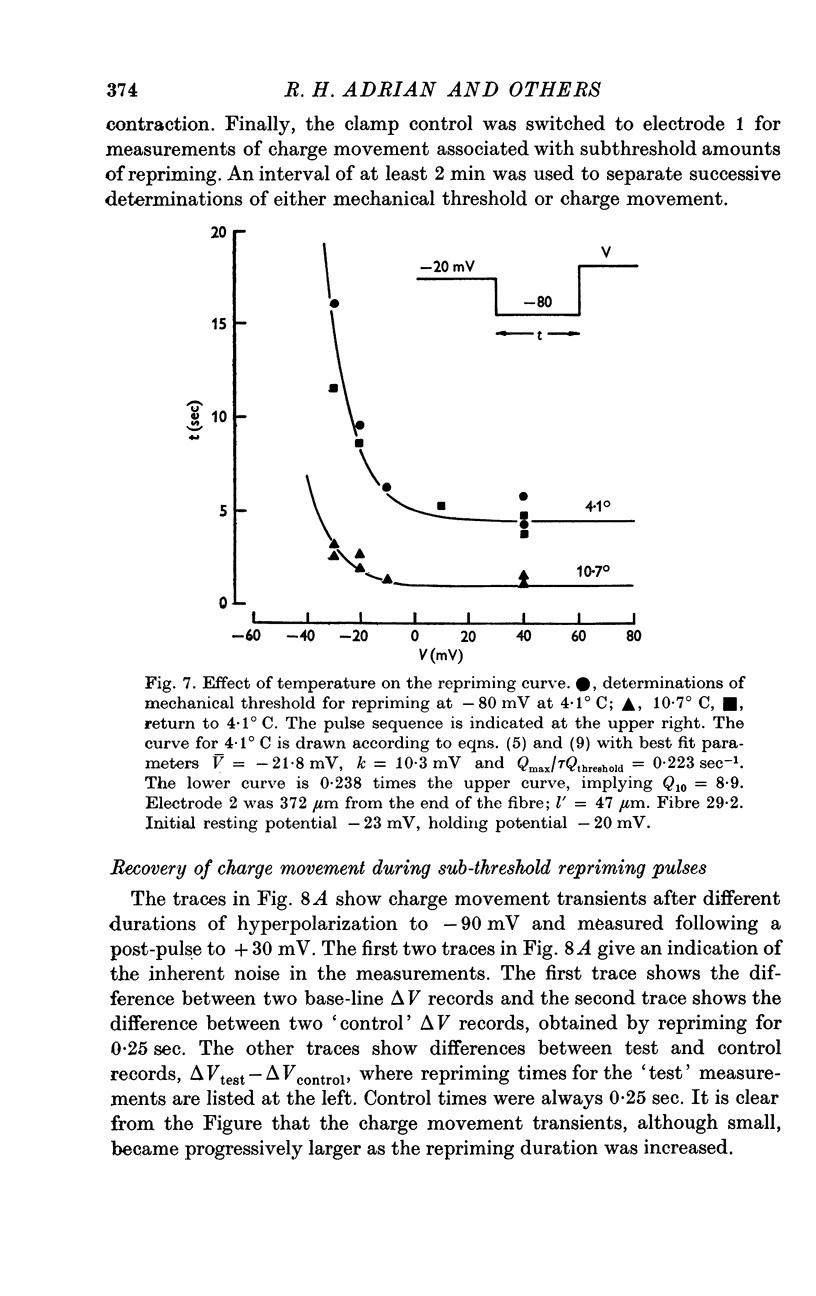
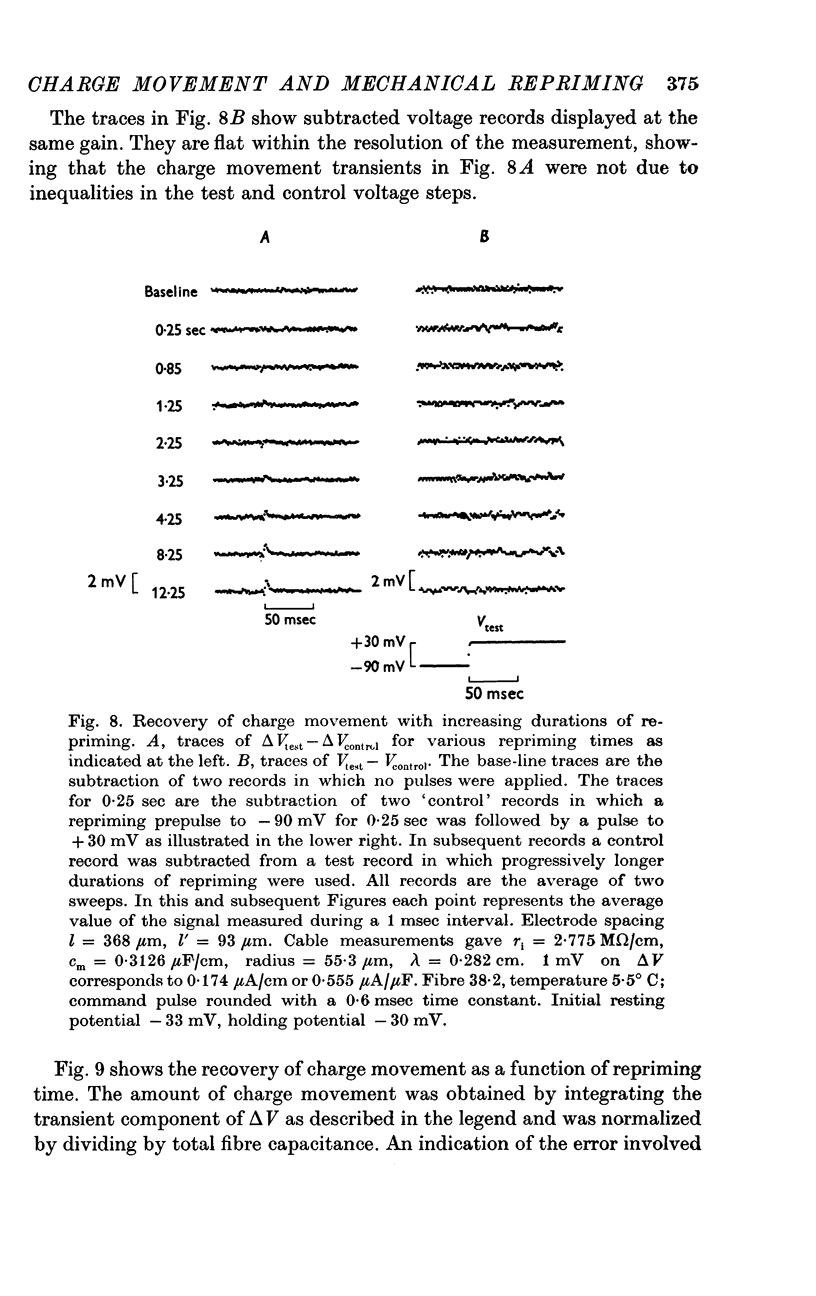
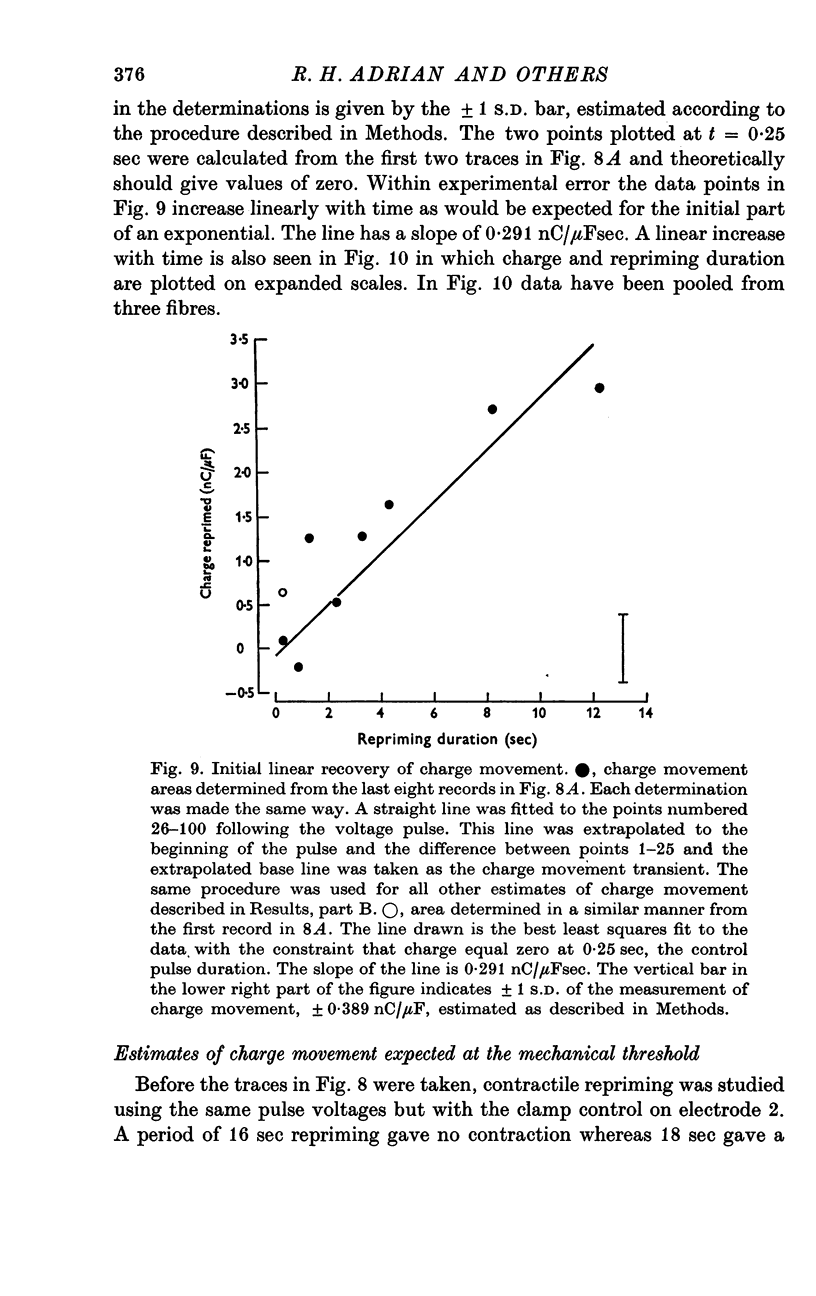
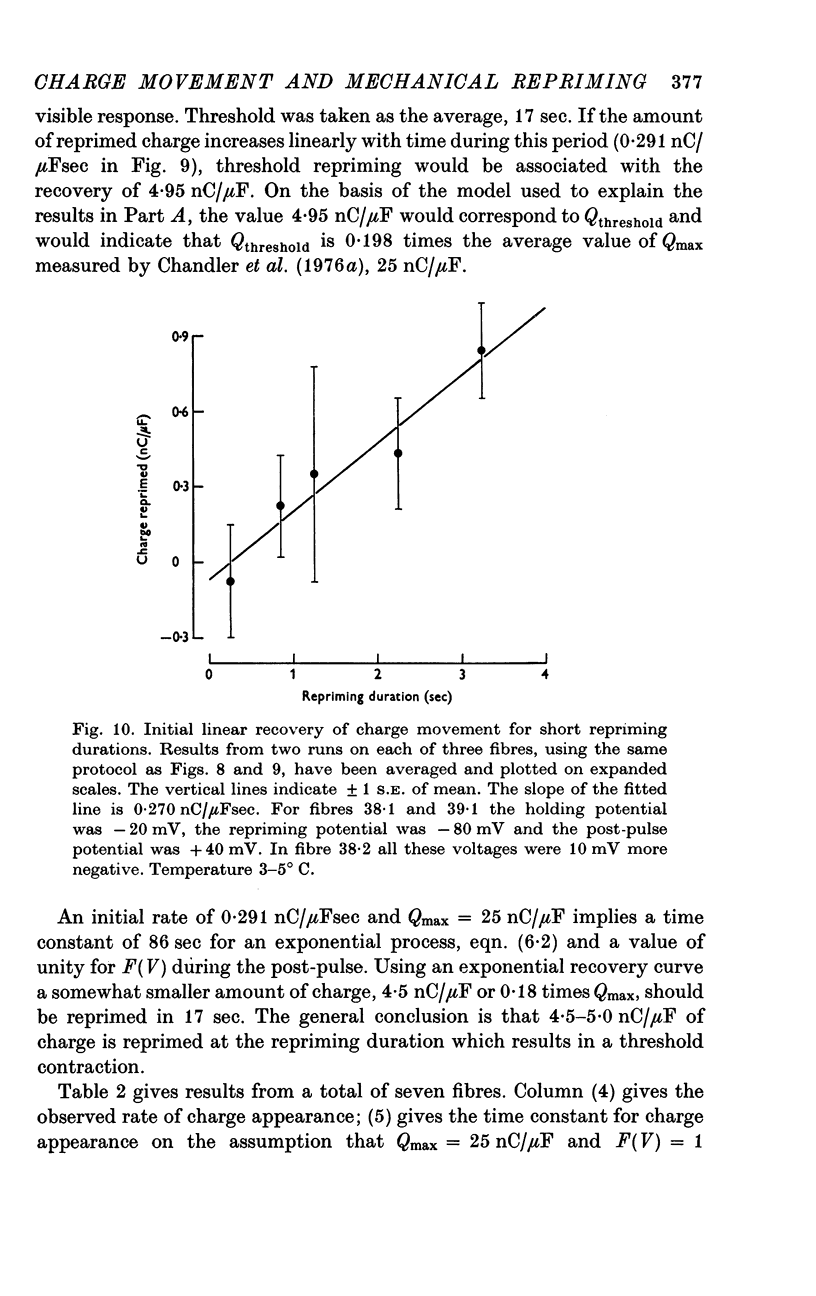
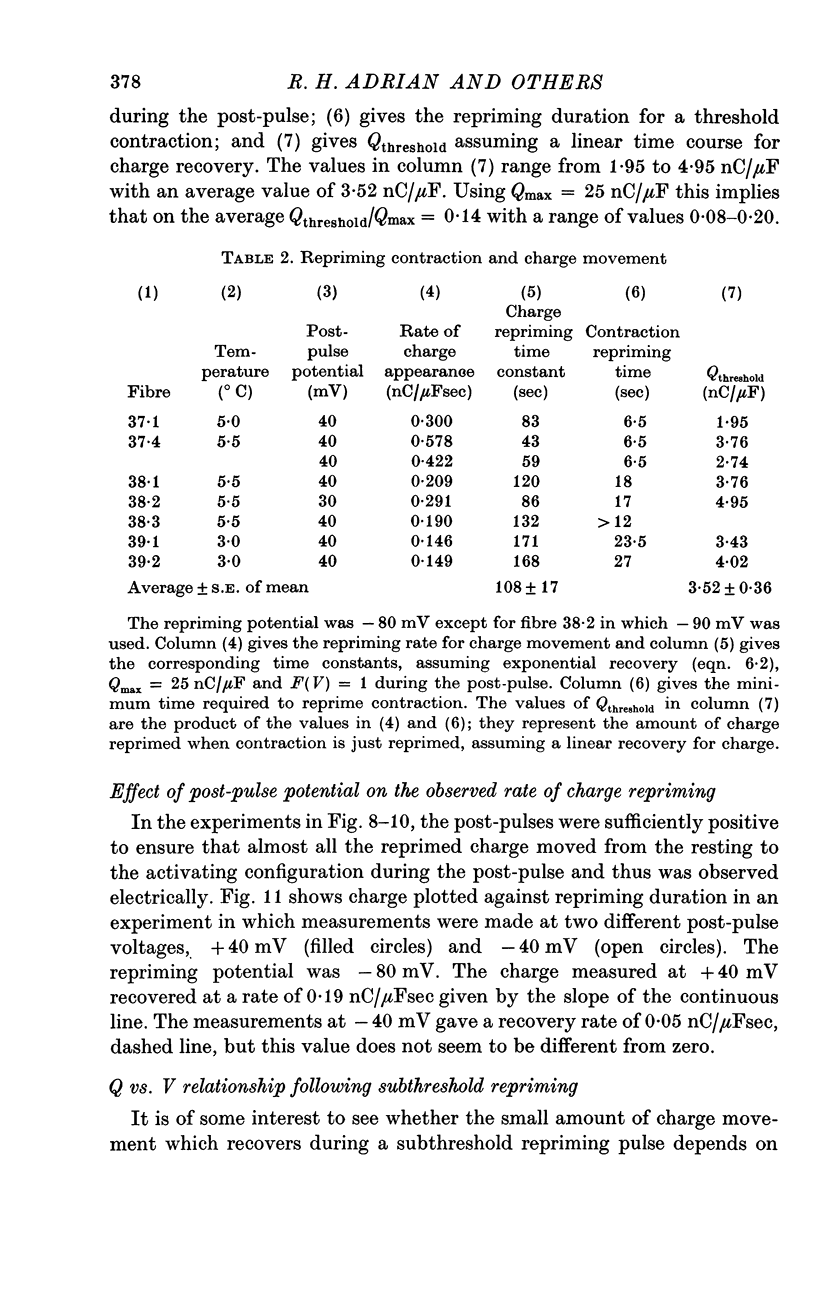
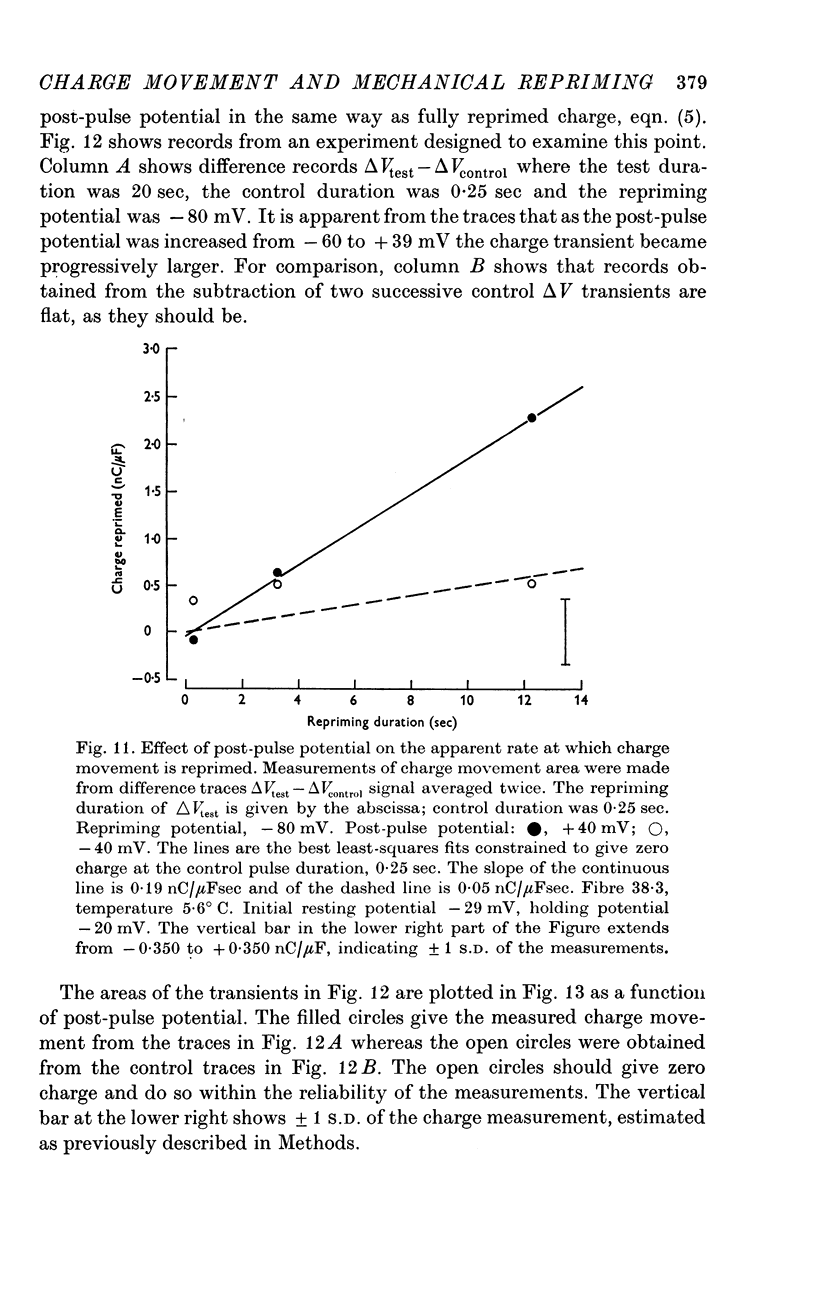
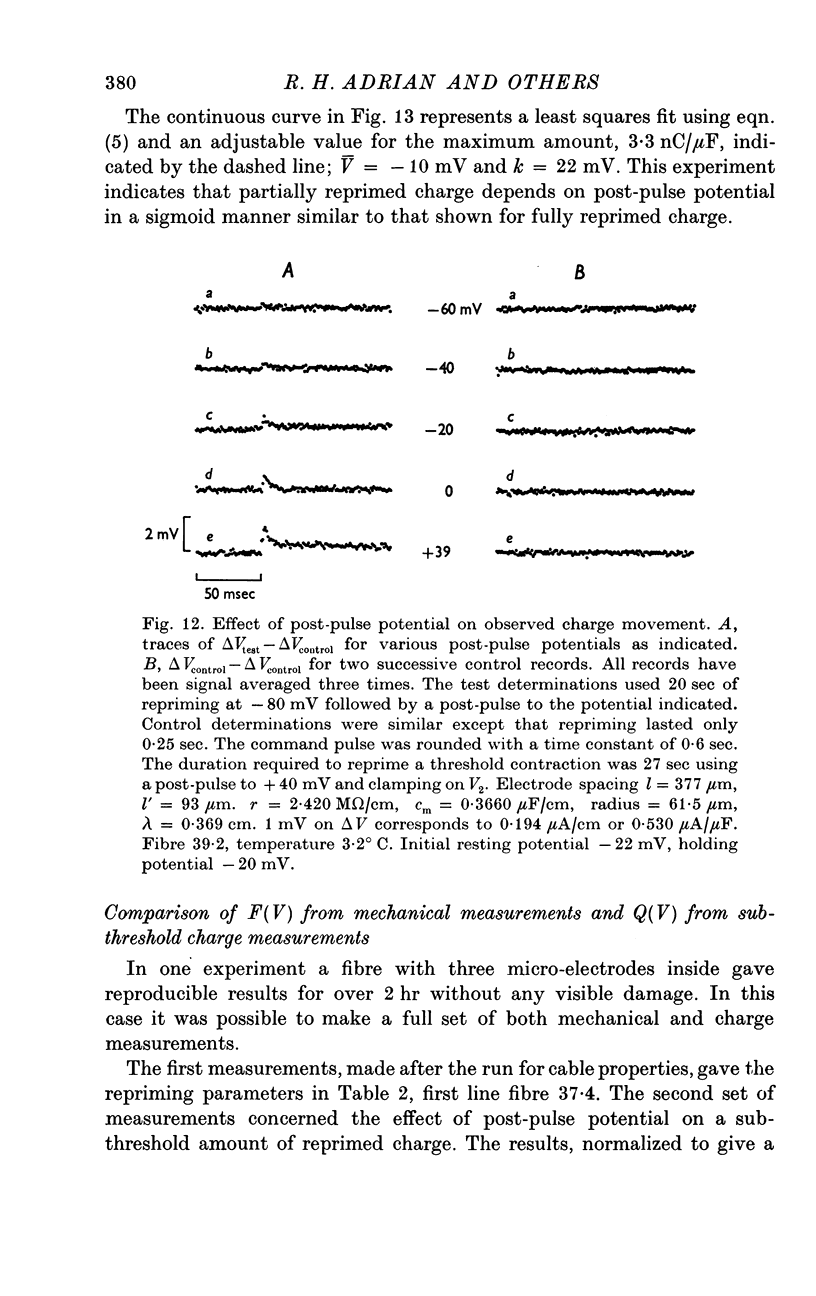
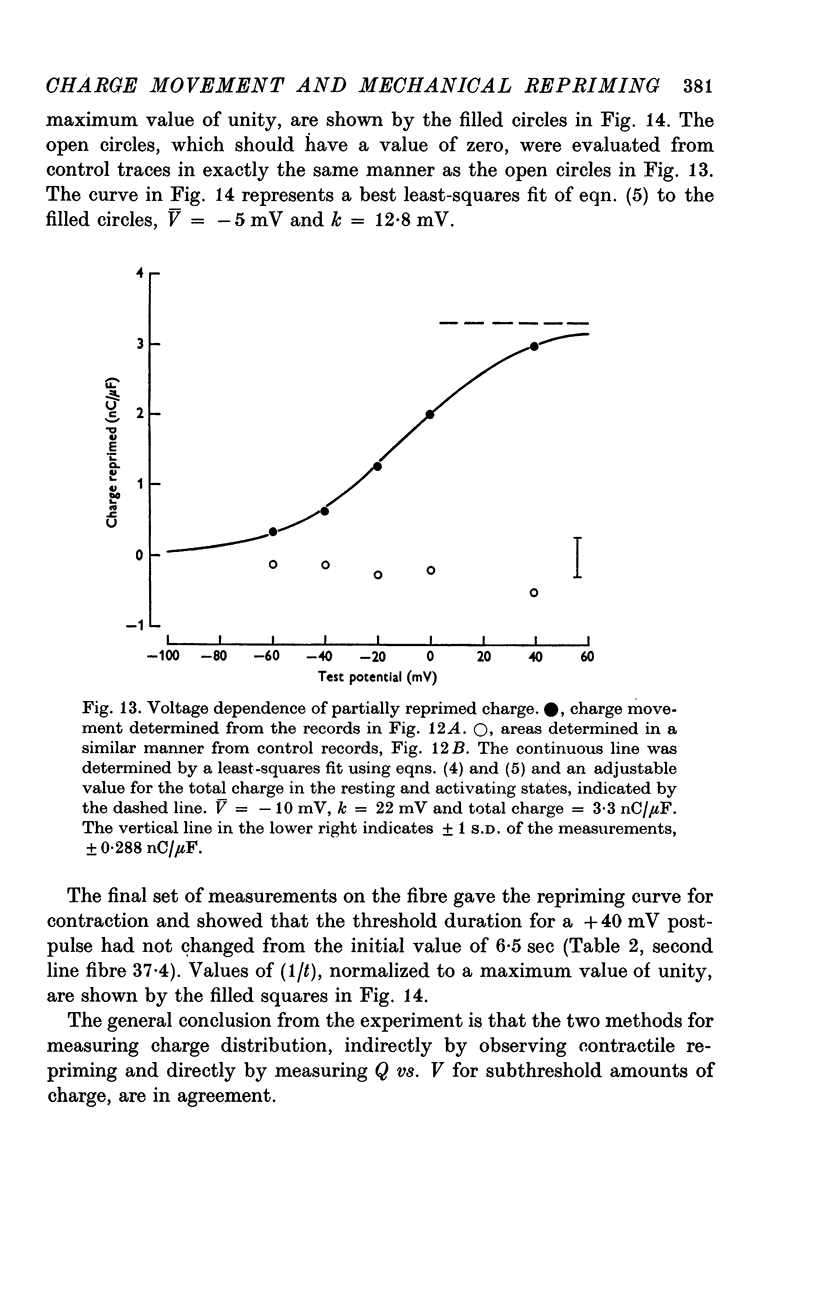
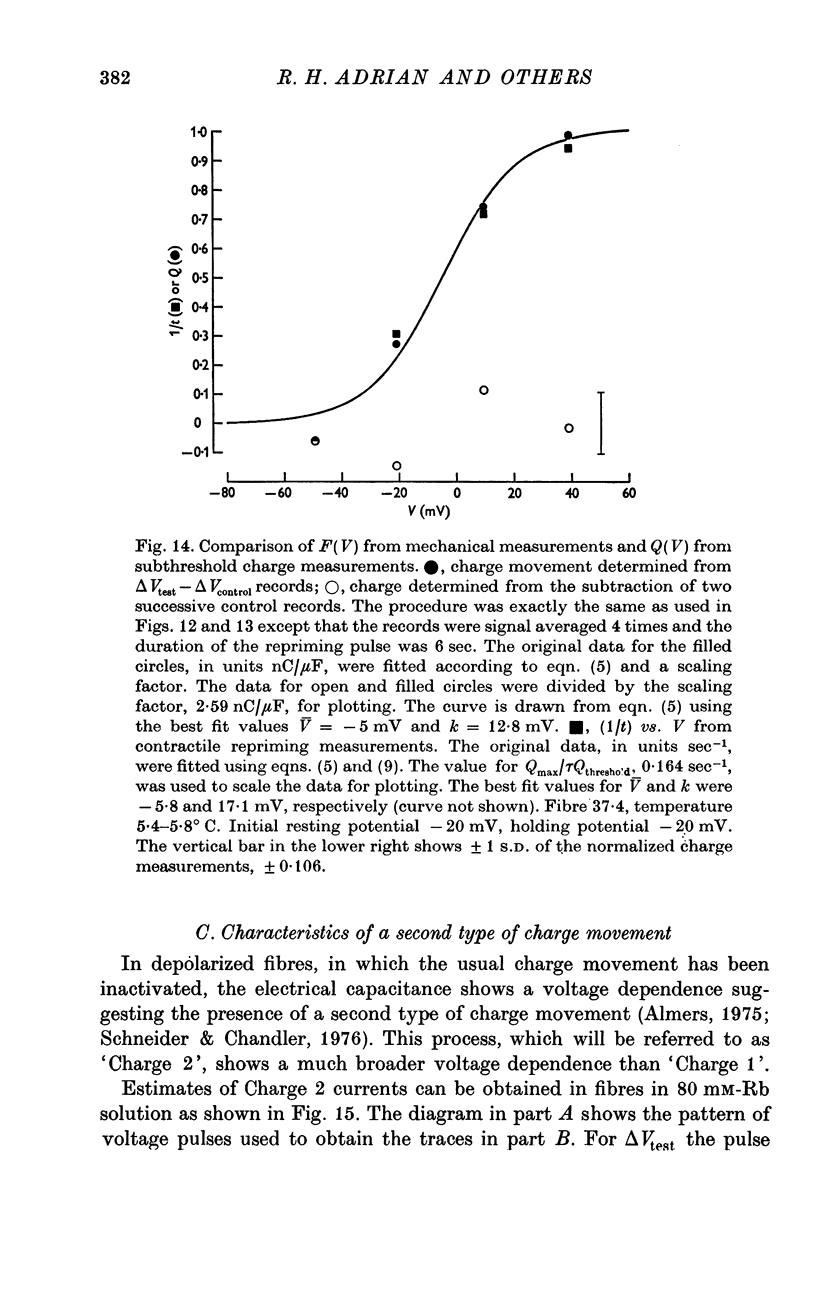
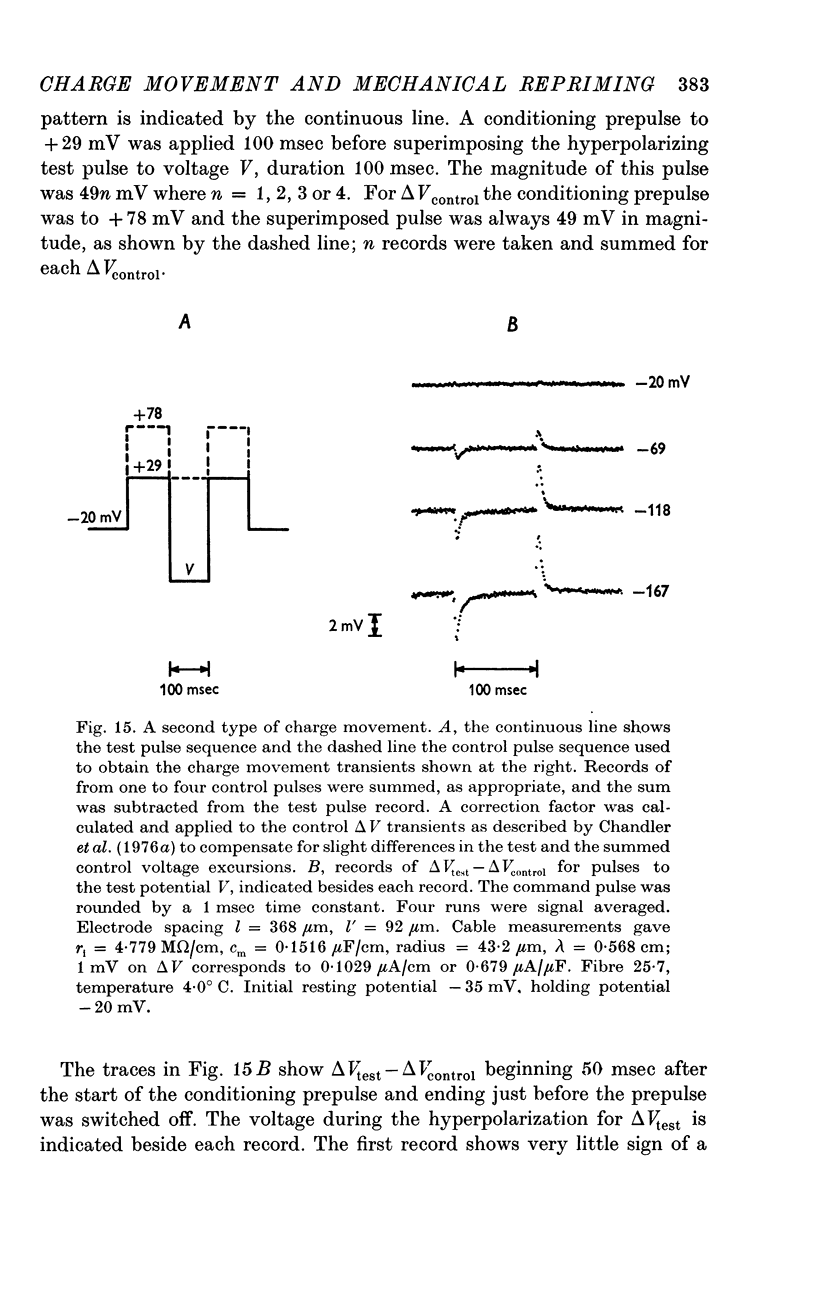
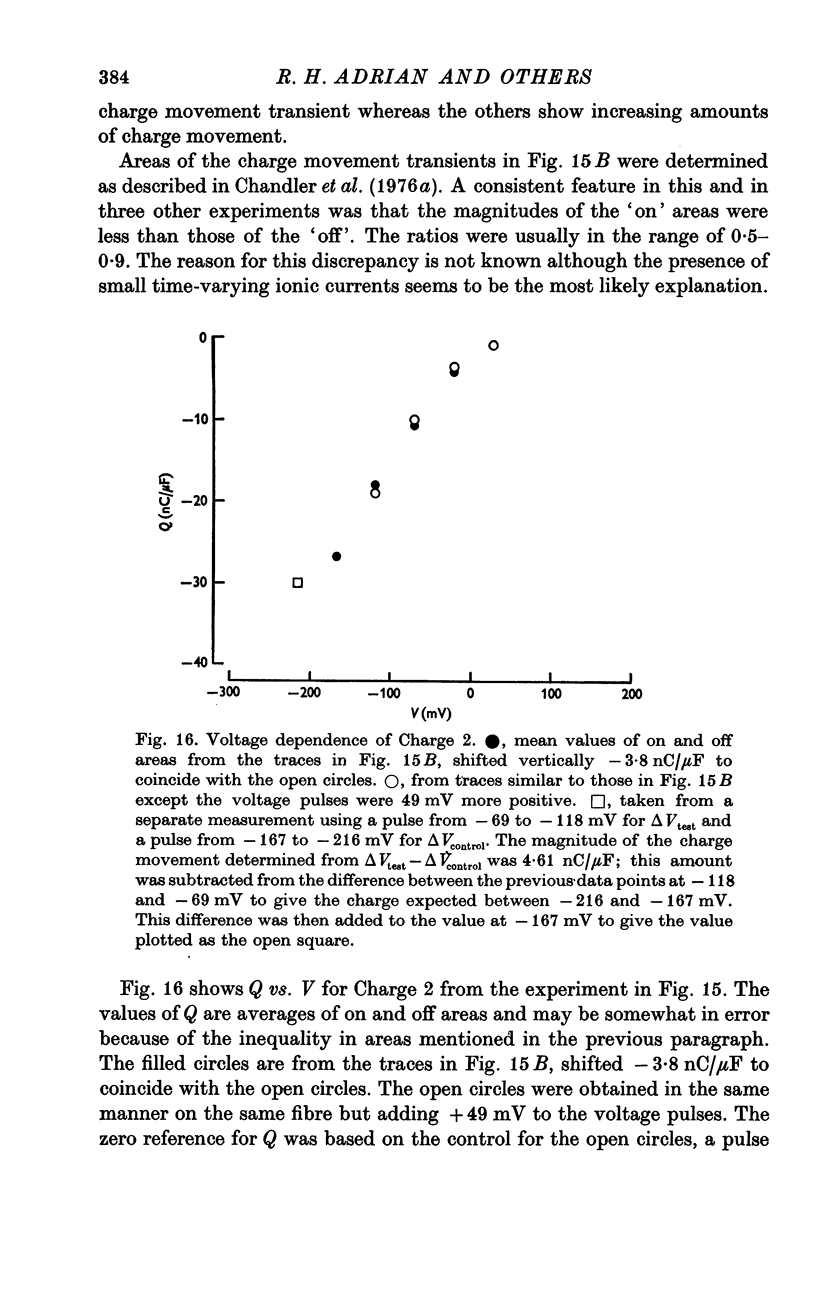
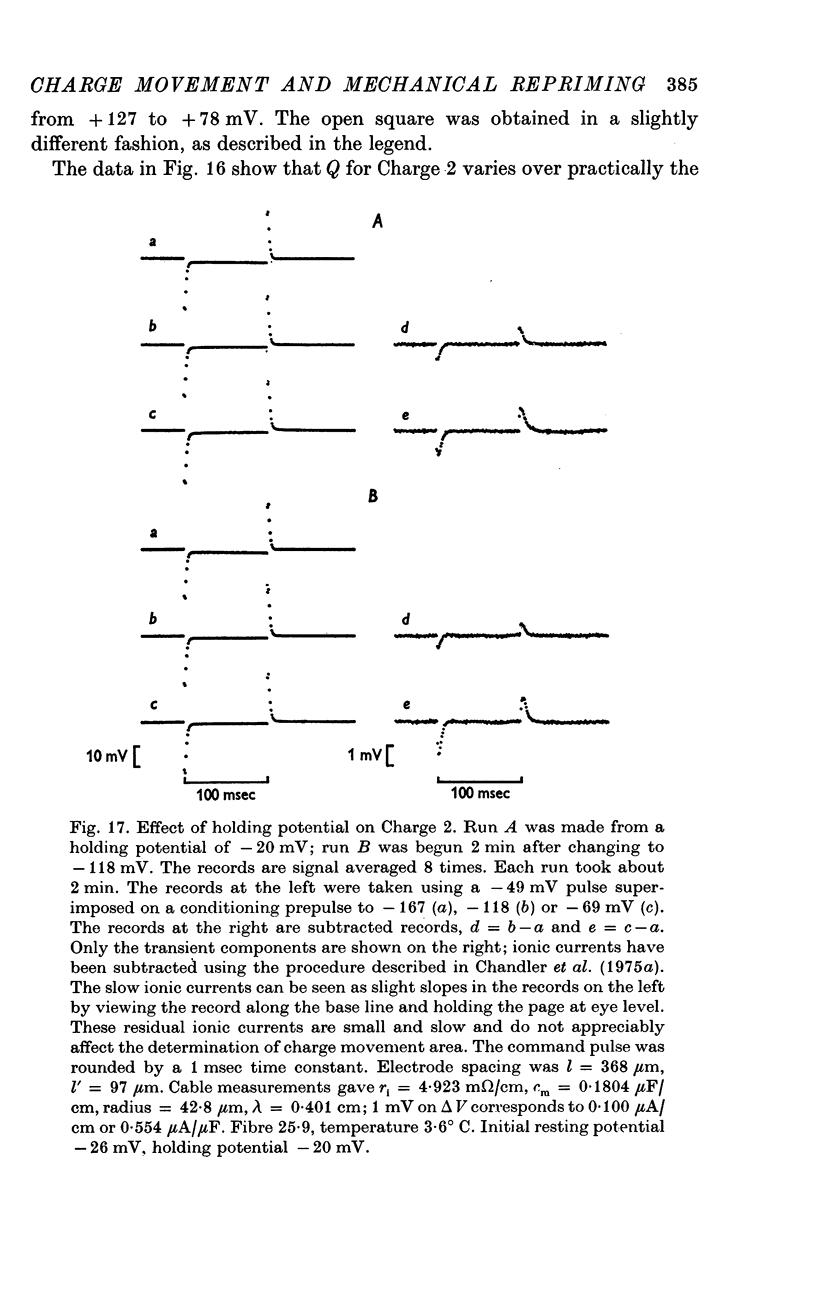
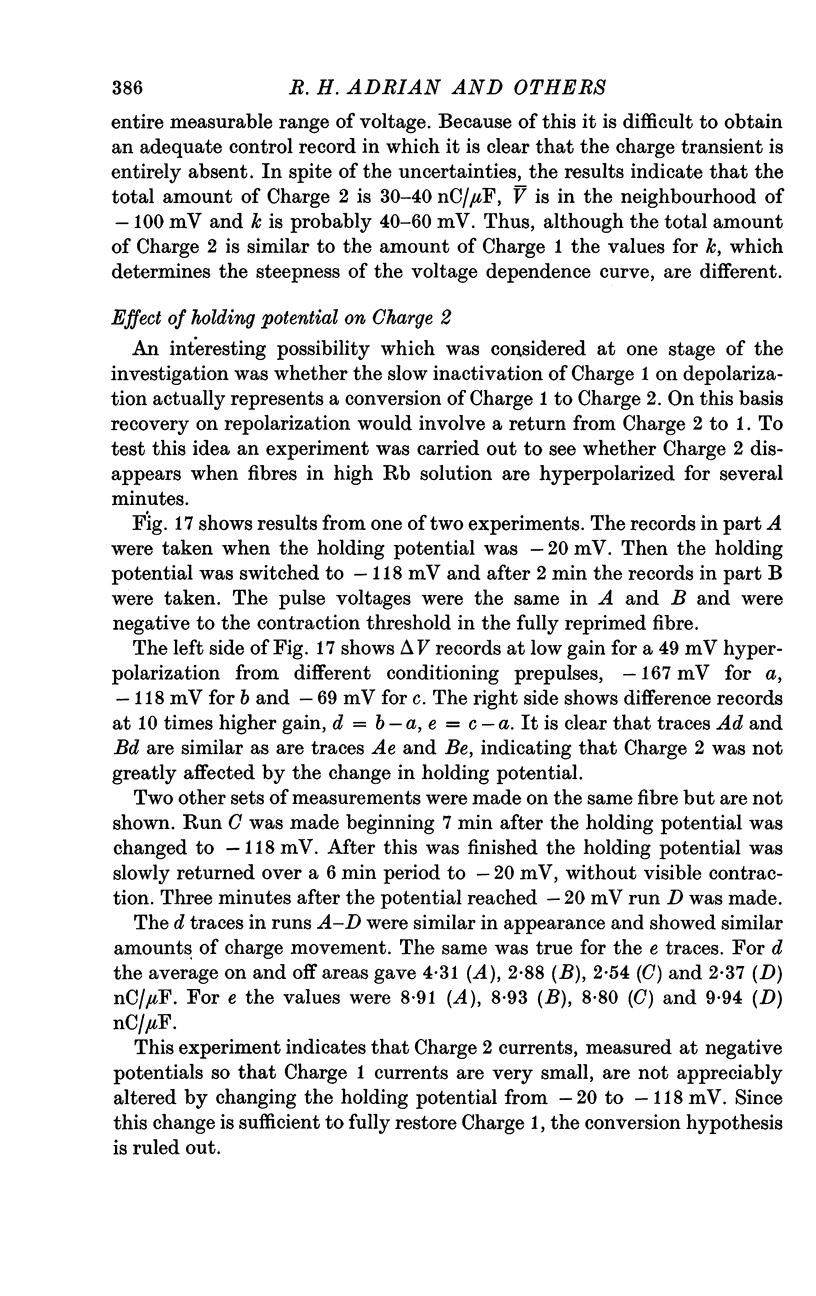
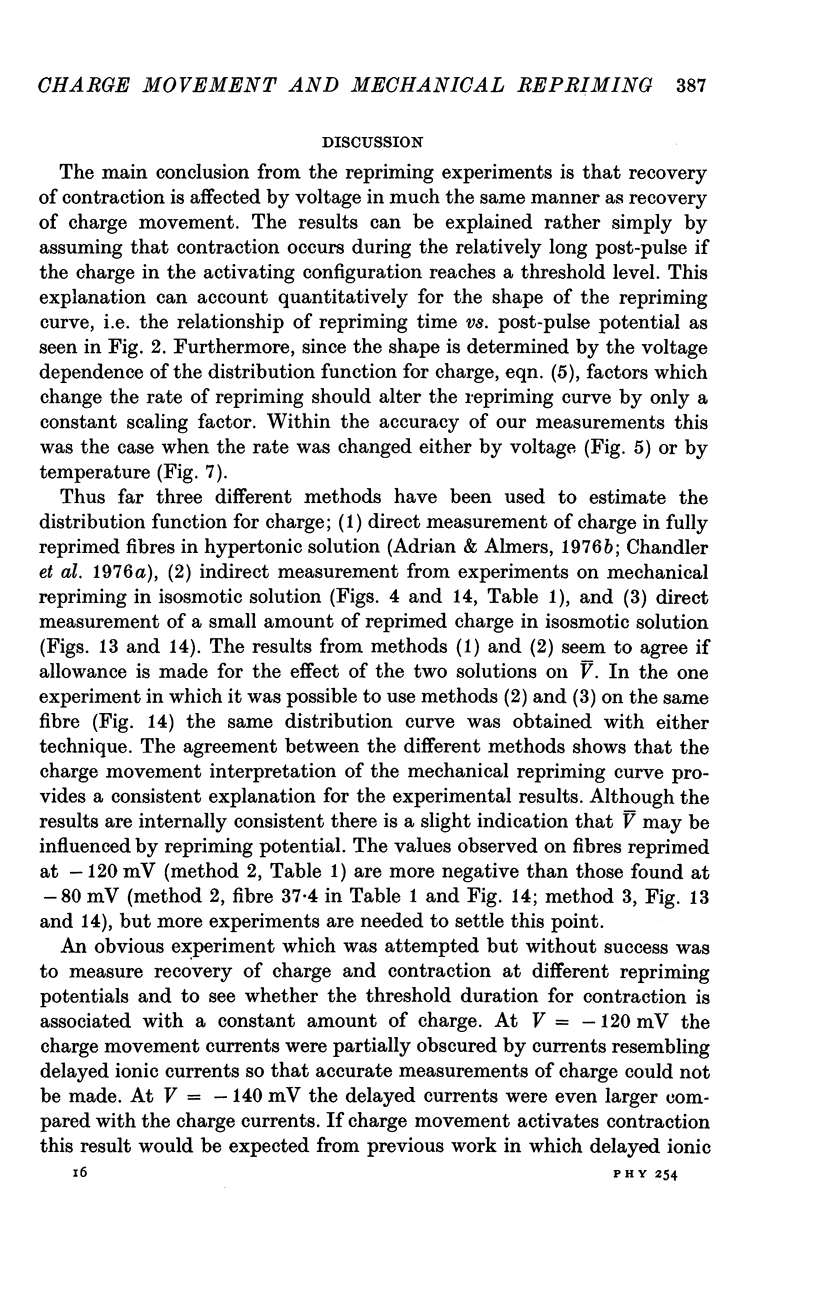
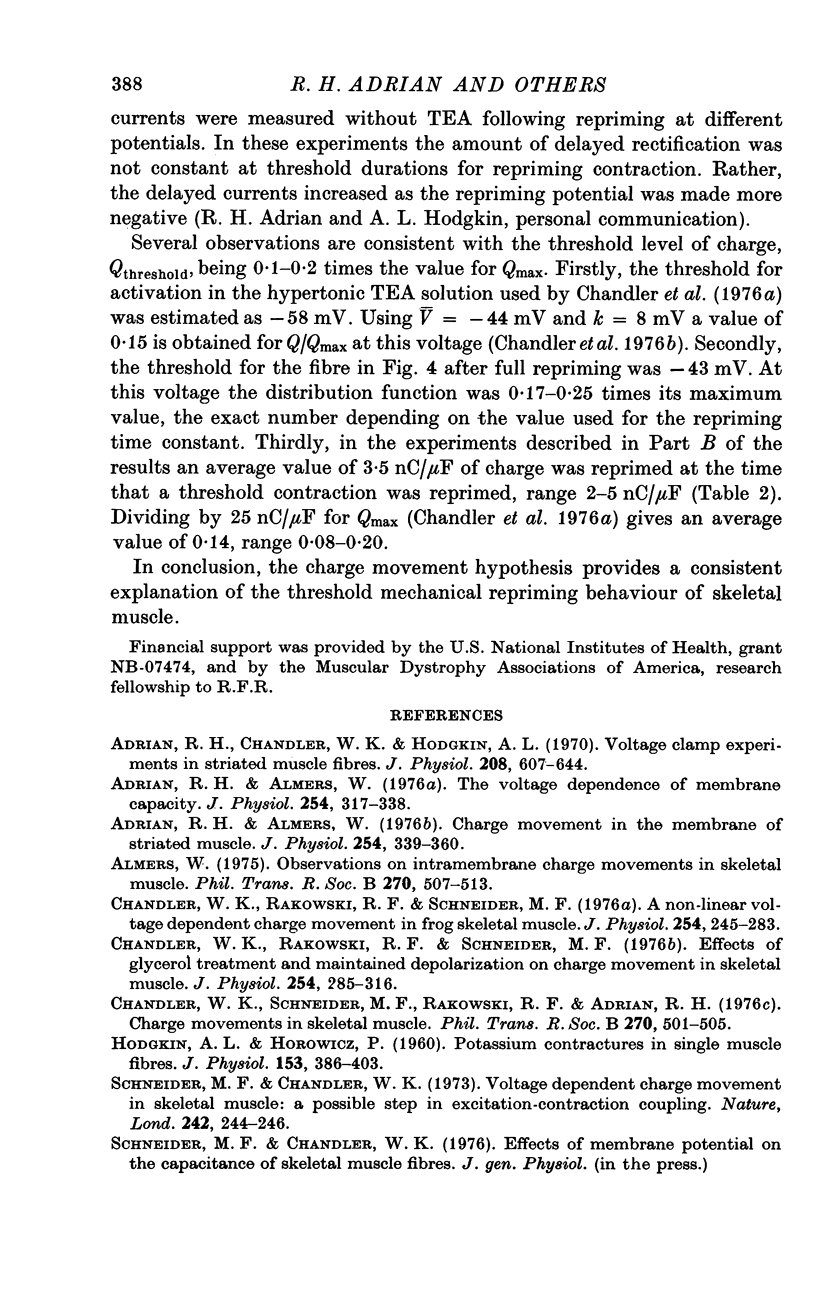
Selected References
These references are in PubMed. This may not be the complete list of references from this article.
- Adrian R. H., Almers W. Charge movement in the membrane of striated muscle. J Physiol. 1976 Jan;254(2):339–360. doi: 10.1113/jphysiol.1976.sp011235. [DOI] [PMC free article] [PubMed] [Google Scholar]
- Adrian R. H., Almers W. The voltage dependence of membrane capacity. J Physiol. 1976 Jan;254(2):317–338. doi: 10.1113/jphysiol.1976.sp011234. [DOI] [PMC free article] [PubMed] [Google Scholar]
- Adrian R. H., Chandler W. K., Hodgkin A. L. Voltage clamp experiments in striated muscle fibres. J Physiol. 1970 Jul;208(3):607–644. doi: 10.1113/jphysiol.1970.sp009139. [DOI] [PMC free article] [PubMed] [Google Scholar]
- Almers W. Observations on intramembrane charge movements in skeletal muscle. Philos Trans R Soc Lond B Biol Sci. 1975 Jun 10;270(908):507–513. doi: 10.1098/rstb.1975.0027. [DOI] [PubMed] [Google Scholar]
- Chandler W. K., Rakowski R. F., Schneider M. F. A non-linear voltage dependent charge movement in frog skeletal muscle. J Physiol. 1976 Jan;254(2):245–283. doi: 10.1113/jphysiol.1976.sp011232. [DOI] [PMC free article] [PubMed] [Google Scholar]
- Chandler W. K., Rakowski R. F., Schneider M. F. Effects of glycerol treatment and maintained depolarization on charge movement in skeletal muscle. J Physiol. 1976 Jan;254(2):285–316. doi: 10.1113/jphysiol.1976.sp011233. [DOI] [PMC free article] [PubMed] [Google Scholar]
- Chandler W. K., Schneider M. F., Rakowski R. F., Adrian R. H. Charge movements in skeletal muscle. Philos Trans R Soc Lond B Biol Sci. 1975 Jun 10;270(908):501–505. doi: 10.1098/rstb.1975.0026. [DOI] [PubMed] [Google Scholar]
- HODGKIN A. L., HOROWICZ P. Potassium contractures in single muscle fibres. J Physiol. 1960 Sep;153:386–403. doi: 10.1113/jphysiol.1960.sp006541. [DOI] [PMC free article] [PubMed] [Google Scholar]
- Schneider M. F., Chandler W. K. Voltage dependent charge movement of skeletal muscle: a possible step in excitation-contraction coupling. Nature. 1973 Mar 23;242(5395):244–246. doi: 10.1038/242244a0. [DOI] [PubMed] [Google Scholar]


